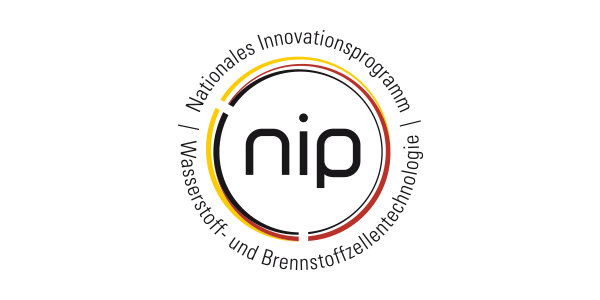07.12.2021
Article CHEManager – Interview by Gilles Le Van, Vice President Large Industries and Energy Transition Central Europe, Air Liquide
What makes hydrogen so special? The gas can be used not only for numerous chemical and industrial processes, but also for many energy applications. As a result, it has become the beacon of hope for all industrial sectors that will not achieve the goal of climate neutrality through greater energy efficiency and green power alone. Andrea Gruß spoke with Gilles Le Van, Vice President Large Industries and Energy Transition Central Europe at Air Liquide, about the potential of hydrogen in industrial climate protection and the necessary framework conditions.
CHEManager: Mr. Le Van, what is the importance of hydrogen for Air Liquide’s business?
Gilles Le Van: As an industrial gas manufacturer, we have been active in the field of hydrogen for over 60 years. Today, around 10% of our global sales are attributable to the hydrogen business. It covers a wide range of industrial applications. Large quantities of the gas are used, for example, in refineries to desulfurize fuels. In the food industry, it is used for hydrogenating fatty acids, and in the metal industry it is used as a protective gas in heat treatments. The gas is also very important as rocket fuel in space travel. Air Liquide has therefore been a partner in the Ariane program for over five decades. Many developments from space travel, for example the liquefaction of hydrogen, are the origin of future projects with hydrogen.
What role will hydrogen play in the future?
G. Le Van: The Paris Climate Agreement and the Green Deal have made hydrogen even more important for the industry. The joint commitment to the climate targets causes every industry – including the chemical industry – to consider, detached from questions of economic efficiency: What can we contribute to achieving this goal? What is technically possible? Hydrogen can make a significant contribution to reducingCO2 emissions in many sectors. In steel production, for example, coal- and coke-based reduction processes could be replaced by direct reduction with hydrogen, reducing emissions by up to 95%. The production of glass and cement is also significantly less emission-intensive with hydrogen. Many of the technologies have been discussed in the past, but it is only because of the climate goals that they have become priorities again.
Is there enough low-emission hydrogen to implement these technologies?
G. Le Van: Conventional, so-called gray hydrogen, is produced by steam reforming of fossil fuels and has a carbon footprint of about ten kilograms per kilogram of hydrogen. For defossilization, one ideally uses green hydrogen, produced from renewable energies, with a footprint of almost zero. But it is four times more expensive than gray hydrogen. Between the extremes, there is a wide range of colors and manufacturing options that are the subject of controversial and sometimes emotional debate. For the defossilization of industry, we need very large quantities of hydrogen, with the smallest possibleCO2 footprint and at affordable prices. If we only take the high road with green hydrogen, we will lose valuable time. Important applications are not coming to fruition and the hydrogen economy is not taking off.
What manufacturing processes does Air Liquide rely on?
G. Le Van: Basically, we are open to technology and are focusing on different paths: on green hydrogen, for sure, but we are also convinced that blue hydrogen, which is produced from fossil natural gas, makes sense in some places. CO2 produced in the process is stored or recycled. In Oberhausen, we produce hydrogen via the so-called partial oxidation of natural gas. A recycling plant captures theCO2 completely. It is used, for example, in the food industry. In this way, we avoid 30,000 metric tons ofCO2 emissions, as we stop this amount of previousCO2 production elsewhere. On top of this, we launched a major green hydrogen project in Oberhausen. With our partner Siemens Energy, we are implementing a 30 MW PEM electrolyzer for hydrogen production. We will connect the plant directly to our hydrogen pipeline so that we can supply our existing customers with green hydrogen in the future. Incidentally, this project was the first in Germany to receive a funding decision as part of the German government’s national hydrogen strategy.
What framework conditions are needed for green hydrogen to become economically viable?
G. Le Van: The price of gray hydrogen will increase due to its highCO2 footprint. We expect that it could double in the next ten years. The question is, how do we make green hydrogen more affordable? Especially about the sufficient availability of low-cost renewable electricity. Until this important prerequisite is met, we need interim solutions to enable the upscaling of green hydrogen. This is where carbon contracts for difference could bridge the gap. They can provide compensation for a limited period of time so that buyers of green hydrogen are not worse off than consumers of gray hydrogen. This is OpEx funding, i.e. funding for ongoing costs. The federal government’s national hydrogen strategy calls for carbon contracts for difference. So far, however, it is only a project. Unfortunately, there is not yet a concept for a pilot project in Germany like in the Benelux countries, for example. Regardless, the industry needs CapEx funding, for example, for investment in equipment, to build a functioning hydrogen economy.
Subsidies could solve the problem of the economic viability of renewable hydrogen. Will they also help ensure that we can produce enough hydrogen in Germany in the future?
G. Le Van: If all sectors implement the possible hydrogen technologies, domestic production will be far from sufficient. We will have to import most of the hydrogen, about 70%. But Germany is already an importer of primary energy.
Where can we get our hydrogen from?
G. Le Van: Put simply, there are four routes. The one from the south. Renewable energy can be produced cheaply in southern Europe or North Africa, converted into hydrogen and imported to Germany via pipelines. A second route comes from the west: Belgium and the Netherlands are very active and open to technology in the field of hydrogen and have ambitions to export green and blue hydrogen to Germany. Via the eastern route, green, blue or turquoise hydrogen could, in purely theoretical terms, be imported from Russia or Eastern European countries via existing pipelines. And if you will, there is a fourth route from the north: The import of green hydrogen from countries like Norway, which have large amounts of renewable energy. From there, import via terminals from Australia or Chile is also conceivable.
What will it take for the national hydrogen strategy to have an impact?
G. Le Van: Even if it may sound boring: First we need enough renewable energies at an acceptable price. This is the most important requirement. Second, we need public funding in a transitional phase – perhaps the next ten years. Industry is willing to contribute, but it must be worthwhile. And for this, we need the bridging funds already mentioned to be able to invest in technologies and infrastructure at an early stage. The national economy also benefits from this. And the third point: we need a uniform certification system for thecarbon footprint of hydrogen. Only if we create transparency here can the consumer consciously choose which product to buy.
What investments does Air Liquide plan to make in its hydrogen business?
G. Le Van: The Hydrogen Council, the global hydrogen council, so to speak, assumes that global demand for hydrogen will increase about tenfold by 2050. Based on this premise, Air Liquide plans to invest about EUR8 billion in hydrogen projects worldwide and produce 3 GW of green hydrogen by 2030. By comparison, Germany as an economy has a target of producing 5 GW by 2030. This illustrates our ambitions in the field of green hydrogen.
 Gilles Le Van, Vice President Large Industries and Energy Transition Central Europe, Air Liquide (Image: © Air Liquide)
Gilles Le Van, Vice President Large Industries and Energy Transition Central Europe, Air Liquide (Image: © Air Liquide)
TO THE PERSON
Gilles Le Van has been with the Air Liquide Group since 1995. After initial positions, he joined the management of Air Liquide Deutschland (ALD) as Director Operations & Strategic Control in 2003. He served as Chief Executive Officer from 2017 until September 2021, when he was appointed Vice President Large Industries and Energy Transition Central Europe. At the same time, he took over as Chairman of the Supervisory Board of ALD.



